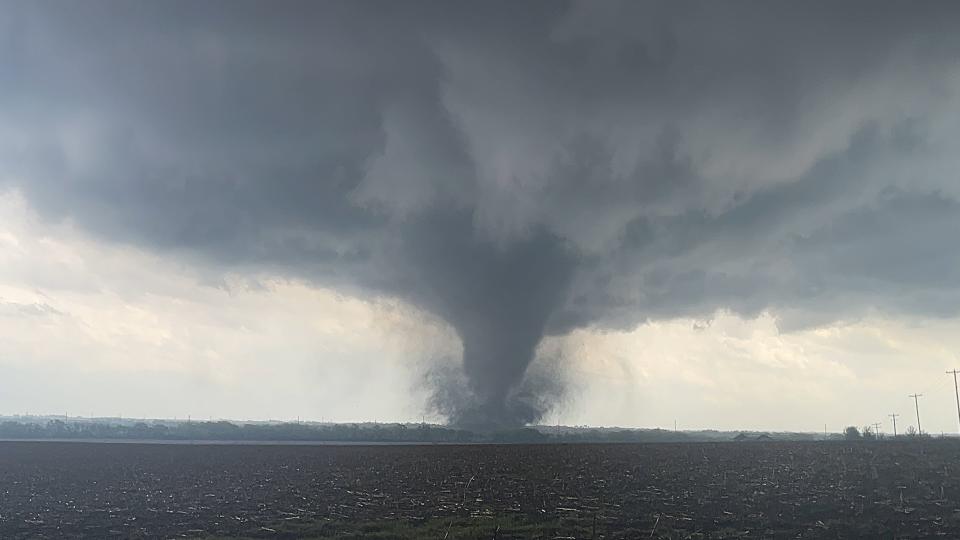From dust devil to gustnado: Terrifying (and fascinating) tornado terms you should know
Tornadoes are among the planet's most fearsome phenomena, with terrifying and capricious wind speeds measured as high as 300 mph. And the U.S. sees more than any other country.
Some are small and nearly harmless; others huge and devastating. Their vortexes can appear and disappear quickly. Their paths can be erratic, unpredictable and difficult to trace. And their dynamic, fearsome nature is hard to explain.
So it's little surprise that there's a whole special vocabulary dedicated to describing tornadoes, their risks and related weather phenomena. Here's a list of tornado-related words, for everyone who has ever wondered what a gustnado or dust devil is.
Derecho: Not a tornado but a type of severe weather, a derecho is a widespread, long-lived wind storm associated with a band of rapidly moving showers or thunderstorms, according to the Storm Prediction Center. A derecho must include wind gusts of at least 58 mph and its wind damage swath must extend more than 240 miles. The term "straight-line wind damage" sometimes is used to describe derecho damage.
Dust devil: Usually smaller and less intense than a tornado, a dust devil is a swirling wind made visible thanks to the dust and debris it picks up. Dust devils often form on hot, clear days. (As if the name dust devil wasn't odd enough, this phenomenon is known as a "willy willy" in Australia.)
Enhanced Fujita (EF) scale: Tornadoes are classified on the Enhanced Fujita scale, which ranges from EF0 to EF5. Originally created by famed tornado researcher Ted Fujita, the scale takes into account estimated wind speeds, observed damage and damage verified in weather service surveys after tornadoes. Unlike hurricanes, which are based on the wind speed of a storm as it progresses, tornadoes are only rated after they've roared through a region.

Firenado: A firenado is a spinning vortex column of ascending hot air and gases that rises from a fire and carries smoke, debris and flame aloft, according to the Bureau of Land Management's Glossary of Wildland Fire Terminology.Also known as a fire tornado or a fire whirl.
Gorilla hail: A colloquial term to describe large hail, which sometimes accompanies tornadoes. So-called "Gorilla-size" hail is considered 2 inches in diameter or greater.
Gustnado: A whirlwind that forms on the edge of a thunderstorm. Despite what the name suggests, gustnadoes are not tornadoes.
Mammatus clouds: Blob-like clouds that form in cool, sinking air. They're usually associated with thunderstorms, but aren't necessarily a sign of severe weather, according to Forbes. The name comes straight from their appearance, as the clouds look just like mammaries.
Tornado emergency: A tornado emergency is reserved for what the weather service considers "exceedingly rare" situations when a severe threat to human life and catastrophic damage from a tornado are imminent or ongoing.
Tornado warning: A tornado warning means there is confirmation that a tornado has been spotted in your area or detected by weather radar and there is "imminent danger to life and property." When a tornado warning is issued, the weather service recommends finding your designated "safe place," preferably a small interior area with no windows.
Tornado watch: A tornado watch means tornadoes are possible because of specific weather conditions. People in the area of a tornado watch should be prepared to find a safe shelter if a warning is issued.
Waterspout: A waterspout is a whirling column of air and water mist, according to the National Ocean Service. They fall into two categories: Fair weather waterspouts, which usually form along the dark flat base of a line of developing cumulus clouds, or tornadic waterspouts, which are tornadoes that form over water, or move from land to water.
This article originally appeared on USA TODAY: Tornado watch, warning and emergency: Twister definitions to know


